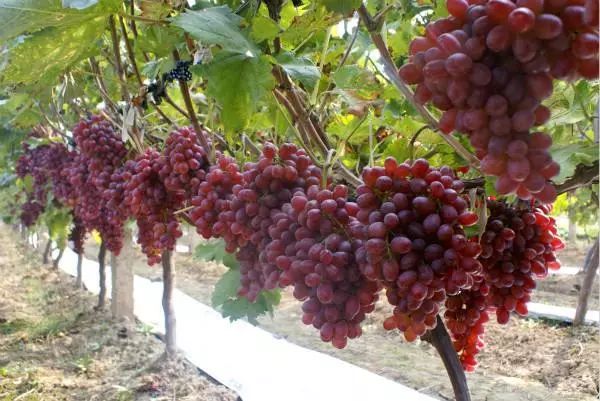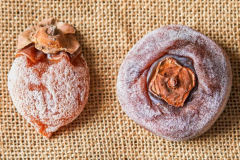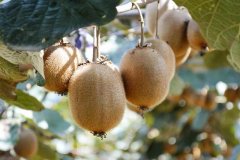Fertilization scheme for management experience of Hongtikrisen grape cultivation
Cryson grape, a grape variety introduced from the United States in 1997, is also called Kronson grape because of translation. After more than 20 years of trial cultivation, Crisson grape has been planted on a large scale in both the south and north of China, and it is one of the important varieties in China's grape industry at present. Although it is widely planted, the market prospect of Crisson is still good. Last year, some orchards still sold for 8.5 yuan per jin.

The main vine of Crisson is relatively brittle, and the frame buried in winter is easy to break. It is recommended to bend on the shelf and tilt to tie it up. The buried soil should be taken from afar to avoid the freezing damage of the root system. After being unearthed, don't rush to get on the shelf, put the main vine flat, which is beneficial to sprout consistency.
Based on the fact that Crisson belongs to the prosperous type, it is recommended to use the horizontal posture, cancel its top advantage, and balance the tree potential is beneficial to high yield. When cutting in winter, the secondary shoots on the particularly strong shoots must be retained, and the elongated shoots of the main vines and the preparatory branches can be left with a length of about one meter. As a result, the branches were cut short with 4-6 buds.
Cryson belongs to the growing type, so it is necessary to control water and fertilizer, especially nitrogen fertilizer, and never use it in budding fertilizer. Mainly apply phosphorus and potassium fertilizer and farm manure. Every year, it is necessary to deeply turn and enlarge the hole in order to take root and improve the fertilizer efficiency. Eat less and eat more. In the year of heavy snowfall in winter, attention should be paid to the control of irrigation, and budding water should be delayed. Inflated water must be thoroughly watered. Must apply overwintering fertilizer!
The 3-leaf stage begins to wipe the buds for the first time, removing the weak buds in the double buds and the incomplete buds; 4 the branches are fixed at the 6-leaf stage, the dense squeezed branches are removed, and the bad branches without tidbits are removed, and the yield is set at 1000 Muir 1500; more branches should be left in the areas with wind damage. Pick out all the new tips a week before the flower. Including the main vine extension branches and vegetative branches, in the case of space is not allowed, the reserve branch can be five-leaf heart. If the fertilizer and water are managed properly, the length of the new shoots before flowering should be kept at 90 cm. If it is more than one meter, it will be too prosperous.
Krisson mainly includes: penetrating wall lice, downy mildew and powdery mildew. The main reason is that the stone-sulfur mixture is not sprayed well before burying in spring and winter, and it is sprayed with transdermal-avermectin; downy mildew and powdery mildew are mainly prevented. Spray the tree with Baitai and Antaisheng and boron fertilizer before flowering. Or DuPont-Yi Bao spray trees.
Boron fertilizer should be applied not only by spraying but also by root. Thinning flowers and fruits and vegetables is early. Pull the ear, mix gibberellic acid with water 30 murmurmi 40 liters, and pull the ear when the Elaeagnus angustifolia blossoms. If you spray the ear with a spray, add synergist and brassinolide if necessary. Dilated, packed with gibberellic acid in one gram with 20% content, the same in front. Add 15-20 liters of water and soak the ear.
It is forbidden to spray thiazuron, brassin, gibberellic acid, indoleacetic acid, naphthoacetic acid, etc.; be careful to use PBO, paclobutrazol, uniconazole, trimethoprim, etc.; humic acid and amino acids are also best not to use.
- Prev

Hanging persimmon in Qingzhou
The Winter Solstice has passed quietly, persimmon has been under the tree for some time, and finally looking forward to the red sweet persimmon. Qingzhou persimmon is not only naturally formed, but also has the characteristics of thick frost, bright bottom, moist quality and sweet taste. In the Ming Dynasty, it was named as a royal tribute in the Ming Dynasty.
- Next

Which is better, red heart, yellow heart, kiwifruit or green heart?
Green heart kiwifruit picked from the tree is relatively hard, need to be placed at room temperature for about 6 days to achieve the effect of natural ripening; yellow heart kiwifruit and green heart is different, as long as touch a little soft feeling can eat. Relatively, many people say that Huang Xin's will taste better.
Related
- The first cup of black tea in spring, the flavor and history of tea gardens in Kenya, Africa
- The computer can not only choose potatoes, but also grow tea rice. AI will grow winter oolong tea champion.
- It is not only the inflated tea bitten by insects, but also engraved with the four seasons tea in Beipu.
- The Oriental Beauty Tea Festival in Zhuxian County takes the stage at the weekend to experience the plus-size feast of oil tea.
- & quot; Oriental Beauty Tea & Exploration of Emei in Hsinchu, the hometown of quot;
- The new variety of strawberry "Tainong 1" dessert is the first choice with mellow aroma. Crimson gorgeous
- History of Tea in Taiwan: from Wild Inner Mountain to Export Tea Garden
- Two types of Taiwan Oriental Beauty Black Tea won the British three-Star Award for Childhood Tea Xiang Zhang Jiaqi changed from pilot to champion tea maker.
- Banana species and varieties: the planting history of Taiwan Xianren banana and dwarf banana is long, is banana disease resistant?
- Coffee planting Technology: Qianjie Coffee from Seedling to harvesting

